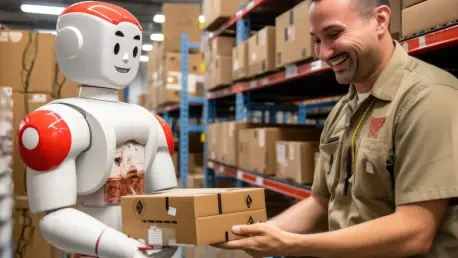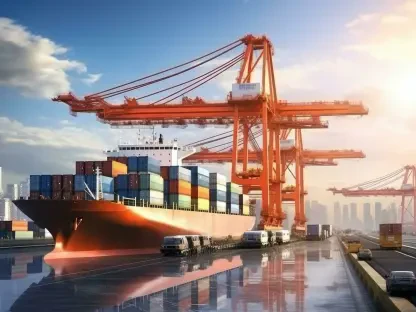Today, we’re thrilled to sit down with Rohit Laila, a veteran in the logistics industry with decades of experience spanning supply chain management and delivery. Rohit’s deep expertise and passion for technology and innovation make him the perfect person to unpack the complex challenges and exciting opportunities in supply chain tech, as highlighted in recent industry reports. In this conversation, we dive into the disconnect between massive digital investments and underwhelming results, the role of leadership in bridging operational gaps, and the transformative potential of emerging tools like AI and robotics. Let’s get started.
What stands out to you as the most critical insight from recent studies on supply chain technology challenges?
I think the biggest takeaway is that despite billions being poured into digital transformation, many companies are still not seeing the promised results. It’s not just about buying fancy tools or upgrading systems; it’s about integration and execution. Studies show that while most warehouse management systems have been updated in the last few years, nearly half of the industry still struggles with outdated or inadequate solutions. That gap between investment and outcome is a wake-up call for everyone in the field.
Why do you think so many organizations are struggling to get a return on their technology investments?
A lot of it comes down to a lack of strategy. Companies often rush to adopt the latest tech without a clear plan for how it fits into their existing operations. You’ve got legacy systems that don’t play nice with new software, and then there’s the human element—teams aren’t always trained to use these tools effectively. It’s like buying a high-end car but not knowing how to drive it. Without alignment across processes and people, the investment just sits there.
How often do you see companies acquiring the right tools but failing to make them work together seamlessly?
It’s incredibly common—probably more the rule than the exception. I’ve seen businesses spend millions on cutting-edge systems, only to realize their IT infrastructure can’t support integration. Data gets siloed, systems don’t communicate, and you end up with less visibility than before. It’s frustrating because the tools themselves aren’t the problem; it’s the lack of a cohesive framework to tie them together that creates bottlenecks.
Can you walk us through some of the specific issues companies face with outdated systems in their supply chains?
Outdated systems are like trying to run a modern business on a flip phone. They’re slow, they crash often, and they can’t handle the volume of data today’s supply chains generate. This leads to errors in tracking inventory or delays in processing orders. I’ve seen companies lose days trying to reconcile mismatched data because their old systems can’t keep up with real-time demands. It’s a constant game of catch-up that costs time and money.
How does a lack of data sharing or transparency affect day-to-day supply chain operations?
It’s a disaster waiting to happen. When data isn’t shared across departments or partners, you get blind spots. For example, if a supplier can’t see real-time inventory levels, they might overstock or underdeliver. On the ground, this means delayed shipments, frustrated customers, and wasted resources. Transparency is the backbone of efficiency—without it, you’re guessing instead of planning, and that’s a risky way to run a supply chain.
There seems to be a disconnect between how top executives and operational managers view supply chain performance. What’s behind this gap?
It’s largely a matter of perspective. C-suite folks are looking at high-level metrics and often assume that big investments equal big results. Meanwhile, managers on the ground deal with the messy reality—system glitches, training gaps, or processes that don’t align. The executives might see a shiny report saying everything’s on track, while the operational team is firefighting every day. That disconnect in understanding creates a false sense of security at the top.
How can supply chain leaders better communicate these real-world challenges to top executives?
It starts with translating operational issues into business impacts. Leaders need to show executives how a glitch in the system leads to lost revenue or unhappy customers, not just technical jargon. Regular, honest updates—backed by data—are key. I also think inviting CEOs to see operations firsthand can be powerful. When they witness the challenges directly, it’s easier to get buy-in for the resources or changes needed.
How crucial is it for CEOs to have a solid grasp of supply chain systems and their intricacies?
It’s vital, but not in the sense that they need to know every technical detail. CEOs should understand the strategic importance of the supply chain and how tech impacts it. They don’t need to debug software, but they should know enough to ask the right questions and trust their supply chain leaders to fill in the gaps. Without that baseline awareness, it’s easy to misjudge priorities or underestimate challenges.
Looking at the optimism around future technologies like AI and robotics, what’s fueling this excitement in the industry?
The excitement comes from the potential to solve long-standing pain points. AI can predict demand with incredible accuracy, cutting waste and overstock. Robotics, meanwhile, can handle repetitive tasks in warehouses, freeing up workers for more complex roles. The industry sees these tools as game-changers because they address efficiency and cost at a scale we’ve never seen before. It’s not just hype; it’s about tangible improvements by 2030.
How do you envision AI reshaping supply chain operations over the next decade?
AI is going to revolutionize how we forecast and manage resources. Imagine systems that not only predict demand based on historical data but also factor in real-time variables like weather or geopolitical events. It’ll optimize routing for deliveries, reduce idle inventory, and even flag risks before they become problems. The biggest shift will be moving from reactive to proactive decision-making, which could save companies millions in inefficiencies.
What’s your forecast for the impact of robotics on warehouse efficiency by 2030?
Robotics will be a cornerstone of warehouse operations by 2030. Tools like advanced robotic arms or autonomous movers can drastically cut down on manual labor for tasks like picking and packing. They work faster, with fewer errors, and can operate around the clock. I believe we’ll see a 30-40% boost in throughput for warehouses that adopt these systems widely. The challenge will be scaling them affordably, but the efficiency gains will be undeniable.









